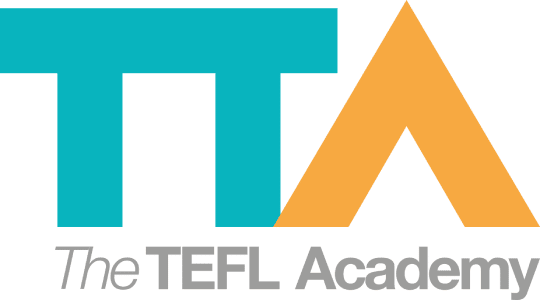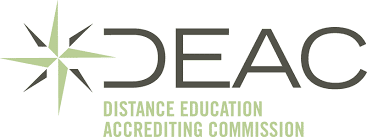Representation In ELT Materials And EFL Classrooms
Join a global community of over 200,000 TEFL teachers working throughout the world! Enrol me!
Recent events have seen people all over the world considering issues which, to be honest, we should’ve been dealing with for a long, long time already. As we should all realise, issues of racism and gender discrimination are evident in all spheres in our world – where we live, where we work, where we eat, where we learn – and sadly our English as a Foreign Language classrooms are no exception. Equal representation in ELT materials and EFL Classrooms is absolutely vital. These issues are especially evident in our classroom materials, if we care to take a closer look. So we thought we should take some time and consider representation in English Language Teaching (ELT) materials.
But before we go any further, let us clarify that this is not an attack on TEFL teachers in any way. We are teachers ourselves so we know what it is like in the EFL classroom. Usually we are given coursebooks or materials to work with by our schools. In other words, we don’t have a choice in what we use to teach. However, it is up to us to be acutely aware of the materials we are using in terms of the social, cultural and economic contexts they are communicating, so we can use them more effectively and appropriately.
Read more: The Case For and Against Coursebooks
This is also not an attack on coursebook writers and publishers. There are a myriad of factors which come into play in materials development and coursebooks are as they are as a result of their development over the years. This is especially evident in the generally accepted exclusion of the PARSNIPS topics in current teaching materials.
Read more: Should We Be Talking about PARSNIPS in the EFL Classroom?
Unfortunately, as a result of all of these factors, what we are left with are ELT materials which are not representative in many ways. This is evident in the content, the images used, and even the language taught.

Representation in content in ELT coursebooks
It is clear when looking at the majority of coursebooks that they are very Euro- and US-centric, even those developed in other countries. There is an under-representation of Asian or African cultures. This can be understood as a result of the UK and USA being seen as the home of English, and while it may be true that those countries are the birthplace of English, this idea no longer reflects the usage of English today.
References to other cultures are often done only when relating to specific cultural practices – wedding customs, traditional food, festivals, and historical events, for example. They are not present in the general material. In other words, other cultures are utilized for their cultural content, but not as examples of everyday situations.
Representation in images in ELT coursebooks
We use images in teaching a lot. If you look at any Teacher’s Book or teaching notes, it will recommend using images to bring colour and life into a lesson. And this is true. Images are a great way to teach language, as well as interest and engage the students in our lessons.
It is important, then, that visuals in a coursebook truly represent our society today.
Research has shown that in coursebooks women are portrayed less frequently than men – famous people especially are usually men – and both genders are portrayed very stereotypically. Men are shown to be the head of the household while women are given the task of child-rearing and housework. When it comes to jobs, men are businessmen, professional sportsmen, engineers and so on, while women are secretaries, shop assistants and waitresses.
Read more: Women in the TEFL Classroom
The average age of characters in coursebooks is a teen to mid-twenties. Elderly people do not often feature, except when the content of the lesson relates to their age specifically. This means that interests and activities are generally geared towards these younger ages.
In terms of race, white people are the majority of characters in ELT coursebooks, white men in particular.
Representation in language in ELT coursebooks
Language taught in ELT coursebooks might seem to be non-controversial, but language is powerful. How language is presented and which context it is given in can influence our thoughts and behaviours.
For example, in coursebooks, topics relating to gossip and casual conversation involve women, while content involving business topics are of the male domain. This can lead our learners to consider women as more frivolous and men as more serious-minded, thus reinforcing gender stereotypes.
This can also be problematic with relation to issues such as sexuality. In a discussion on his blog An A-Z of ELT on the usual language that is taught in an ELT coursebook, Scott Thornbury points out that the questions Are you married? What’s your job? And Where do you live? do not invite, and may even preclude, a response along the lines of: Actually I’m gay and unemployed, and I’ve been sleeping on the sofa at my folks’ place ever since the bank repossessed my apartment. And you?
Read more: Three TEFL Influencers You Should Be Familiar With
Why is all of this important? According to research, “It can be argued that coursebooks, with all their aspects, have the power of altering students’ opinions and beliefs on many socio-cultural matters from gender and popular culture to religion and social class since the majority of classroom teaching is carried out through the use of them”.
Cultural contexts are especially important in countries in which English is not the first language. Learners in these contexts will still use ELT coursebooks which are written and developed in the US or Europe but they will not have direct contact with English first-language speakers. In other words, they will learn about so-called English culture solely through their coursebooks.
As you can imagine, ideas and opinions communicated in textbooks can be adopted by the learners using them. In this way, racial, economic and gender stereotypes can thus be perpetuated by our coursebooks.
Representation in the EFL classroom
Of course, as a teacher, it would be impossible to throw the coursebook out the window and create all your lessons from scratch. But what you need to do is be aware of the materials you are using. Look at them objectively and try to identify where they could be more representative. Then, find images, stories, people or cultures that you can bring into the lesson to complement the materials you already have.
For example, if you are teaching a unit on Business English, be sure to include images of women in positions of power, or stories of successful women. If you are teaching a unit on celebrities, besides including women, refer to black people or people of colour – being wary not to only include the stereotypical rap artists or talk show hosts, but also fashion designers or business owners. When teaching a unit on family, focus on non-traditional family structures. If you are teaching a unit on literature, refer students to books written by or about people from minority communities.
This might sound like a lot of extra work for the teacher, and in the beginning it might be. But soon you will have a range of resources you can use to supplement your lessons which will make them more representative and a truer reflection of our society – and our EFL lessons will be all the better for it.
Accreditation & Quality Assurance
The TEFL Academy was the world’s first TEFL course provider to receive official recognition from government regulated awarding bodies in both the USA and UK. This means when you graduate you’ll hold a globally recognised Level 3 (120hr) Certificate or Level 5 (168hr) Diploma, meaning you can find work anywhere and apply for jobs immediately.
 United Kingdom
UK
United Kingdom
UK












